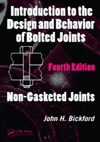One of the first questions I always ask someone who is experiencing problems with a bolted joint is: “How did you determine the specified installation torque?” With the exception of a few key industries, the most frequent answer is, “It came from a table” or “It has always been that way,” which means it probably came from an older version of the same table.
Installation torque is one of the most common points of assembly discussion between design engineers and manufacturing engineers. However, the most widely held misconception is that joint integrity is determined by applying the right torque.
Instead, the clamp load generated by bolt tension is generally what is important. And, the right torque can only be known as it relates to the tension that it produces. This is analogous to predicting the holding power of a nail based on the force of the hammer blow.
It is not the force of the hammer blow that keeps the deck together, but the holding power of the nail. Just as you can’t know the added holding power of a nail based on the force of the next hammer blow, because the profile of the nail and the wood properties vary, you can’t calculate the clamp load generated by a given torque due to a number of friction factors specific to the joint.
This is most commonly expressed by the short-form of the torque-tension relationship: T=kDF, where T is torque; k, the friction coefficient, is a storehouse for those friction factors; D is the bolt diameter; and F is the force generated by bolt tension.
Any chart of recommended installation torque for a given size and grade of bolt must assume a specific friction coefficient, usually 0.2. But, that coefficient can vary by 100 percent, even for common materials, and it is not accurately predicted by analytical means.
Therefore, the “right” torque to produce a given tension can only be determined with good accuracy by testing to determine the effective friction factor. This should also point out the limitation of installation tools ensuring a reliable joint.
Because applied torque and resulting bolt tension are proportional to one another, a given percentage error in the application of torque, or in estimation of the friction coefficient, will produce the same error in bolt tension. However, in the vast majority of cases where any type of torque-indicating tool is used, torque is applied with more much accuracy than the friction coefficient is estimated. Therefore, focusing on the accuracy of the installation tool is not as fruitful as understanding the joint itself.
Although the terms “bolt tension” and “clamp load” are often used interchangeably, there is an important difference. As most commonly defined, clamp load refers to the force generated by bolt tension, which contributes to the load applied at the joint interface. Bolt tension is the force generated by bolt elongation, independent of where it is applied.
What’s the difference? Imagine that a heavy welded fabrication is being bolted at four corners to a flat plate. It is unlikely that the mating locations on the weldment are in the same plane as the mount plate, so they will need to be deflected to bring them down to the plate.
The force required to draw the weldment to the plate is generated by bolt tension. But, until the weldment comes in contact with the plate, none of that tension will contribute to the clamp load. Therefore, calculating clamp load based on bolt tension will result in an overestimation of joint capacity.
Another risk of letting T=kDF determine installation torque without validation is the uncertainty of whether the components can handle the stress generated by desired bolt tension. While it may be widely recognized that a fastener threaded into a metal nut will usually fracture or extrude a thermoplastic part before the screw fails, component yielding can also occur in all metal joints whenever there are gaps in the joint stack.
Often, these are seemingly insignificant, like the gaps between a weld nut or nut clip and the mating part. Another cause is instances where the compressive strength of the component is exceeded. The use of socket head cap screws to fasten aluminum or mild steel components is a common example. The bearing area under the head of these fasteners is so small that the compressive strength of softer components will be exceeded well before the high strength of the fastener can be fully utilized.
In many cases, the “reference table” method of determining installation torque will not result in joint failure. But, understanding the basic tenets presented here will help ensure a greater probability of success. After all, something as important as torque should be more dependent on engineering than by consulting a Ouija board.
Archetype Joint specializes in joint design, testing and validation. Dave Archer can be contacted at darcher@archetypejoint.com
Fastening Threads: Target Torque Ouija
Looking for a reprint of this article?
From high-res PDFs to custom plaques, order your copy today!






